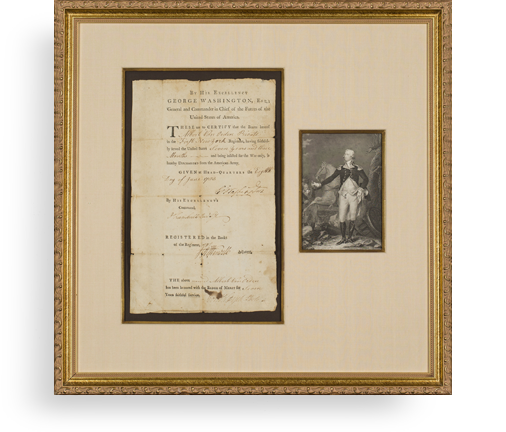sold Connecticut Responds to Washington’s Call For Troops For the Continental Army

In a rare Revolutionary War broadside, it resolves to send its own militiamen to help with the expected summer campaign against the British .
In the spring of 1780, George Washington was waiting for the French to arrive and planning to launch a summer campaign against the British in New York. To accomplish this, he sought to maximize the number of troops at his disposal. So the call went out for additional men, and the...
In the spring of 1780, George Washington was waiting for the French to arrive and planning to launch a summer campaign against the British in New York. To accomplish this, he sought to maximize the number of troops at his disposal. So the call went out for additional men, and the state of Connecticut heeded that call. In May, the General Assembly resolved to send 1,500 men to the Continental Army, and on June 30 the Governor, Jonathan Trumbull, and the state Council of Safety, met on the subject. In addition to raising the new recruits, they determined to call on men in the Connecticut militia to volunteer to serve with the Continental Army until December 31, well after the expected 1780 campaign would be ended. They then issued a broadside to communicate the information to the militia companies.
This broadside, entitled “At a Meeting of the Governor and Council of Safety, holden at Hartford, 30th June, A.D. 1780,” prefaced the call for volunteers by saying that “General Washington and the Committee of Congress” had written letters representing that it was “indispensably necessary for the safety of this and the United States” for this action to be taken. It then laid out the details of the Council’s resolution, the call for troops and their use in the Continental Army, and it was signed in print by Jedidiah Strong, Clerk. It is a rare broadside.
William Worthington was colonel of the 7th Connecticut militia regiment, and he received a copy of the broadside. He turned it on the verso and dictated a letter to his company commanders, dated July 3, 1780, which was written out and signed for him by his adjutant, in which he notified them of its contents. “To the commanders of the several military companies and the 7th Regiment of militia…You will see by this act of the Governor and Council of Safety that 1000 of the state draft of the militia that were to serve for three months are now to serve in the Connecticut line of the Continental Army until the last day of December next and that 1520 are to serve as militia. You are hereby directed and ordered to raise from the several companies under your command 46 rank-and-file according to the details given you by the adjutant pursuing the design of the within resolve…”
This show of patriotism brought Washington more men, but the French arrived too late for a 1780 campaign. It was postponed until 1781, at which point the focus of the American attack was not New York, but Yorktown, Virginia.

Frame, Display, Preserve
Each frame is custom constructed, using only proper museum archival materials. This includes:The finest frames, tailored to match the document you have chosen. These can period style, antiqued, gilded, wood, etc. Fabric mats, including silk and satin, as well as museum mat board with hand painted bevels. Attachment of the document to the matting to ensure its protection. This "hinging" is done according to archival standards. Protective "glass," or Tru Vue Optium Acrylic glazing, which is shatter resistant, 99% UV protective, and anti-reflective. You benefit from our decades of experience in designing and creating beautiful, compelling, and protective framed historical documents.
Learn more about our Framing Services








































































































